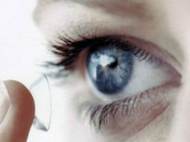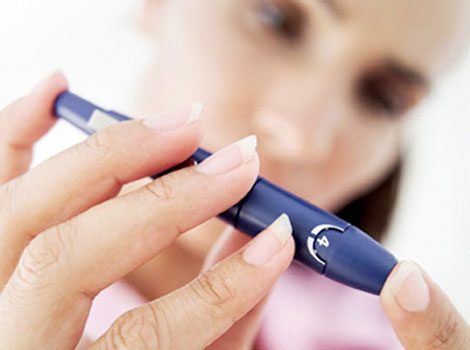Hydrogel lenses could alert the diabetics to eat or take insulin
 Diabetics are encountering the unenviable task of checking their blood sugar levels constantly, usually through a repeated ritual of pin-pricks and blood drawing. But a new non-invasive technology developed by a biochemical engineer at the University of Western Ontario lets diabetics check on their glucose levels with contact lenses that change colors as their blood sugar rises and falls.
Diabetics are encountering the unenviable task of checking their blood sugar levels constantly, usually through a repeated ritual of pin-pricks and blood drawing. But a new non-invasive technology developed by a biochemical engineer at the University of Western Ontario lets diabetics check on their glucose levels with contact lenses that change colors as their blood sugar rises and falls.
Nanoparticles embedded in the hydrogel lenses react with glucose molecules in naturally occurring tears. A chemical reaction then causes the lenses to shift their hues, alerting the wearer to falling or spiking blood sugar levels. The wearer can then make the appropriate adjustments to his or her blood sugar, all without having to carry around (and use) devices for drawing and analyzing blood.
The head researcher Professor Jin Zhang from Laboratory for Multifunctional Nanocomposites, University of Western Ontario, has received $216,000 from the Canada Foundation for Innovation as a result of the breakthrough process to develop other applications for multifunctional nanocomposites.
Aside the application in biomedicine, the nanocomposite films could be used in food industry in order to prevent food spoilage by preventing oxygen, carbon dioxide and moisture from reaching fresh meats and other foods, or by measuring pathogenic contamination. Another usage for these films could be found in packaging where it could make waste increasingly biodegrade.
Although it might seem a bit odd until we get used to the eye-color-changing phenomenon, if proven useful to various types of diabetes it could be a good way to help diabetics. It will also help the people in their lives to be more aware of their needs. In that manner you could help by warning a diabetic to eat something at that moment, before the blood sugar levels get too low, or whether the insulin is needed in case it was too high.










As per global projections by International Diabetes Federation (IDF), the number of diabetes patients has risen sharply in recent years. While in 1985, 30 million people had diabetes worldwide; the number rose to 150 million in 2000, 285 million in 2010 and is estimated to be 435 million – 7.8% of the adult world population by 2030.
India has the highest number of diabetics in the world. By next year, the country will be home to 50.8 million diabetics, making it the world’s unchallenged diabetes capital. And the number is expected to go up to 87 million — 8.4% of the country’s adult population — by 2030.
As such the new non-invasive technology developed by a biochemical engineer at the University of Western Ontario lets diabetics check on their glucose levels with contact lenses that change colors as their blood sugar rises and falls, will be handy for Diabetics to check the sugar level.
Dr.A.Jagadeesh Nellore(AP),India